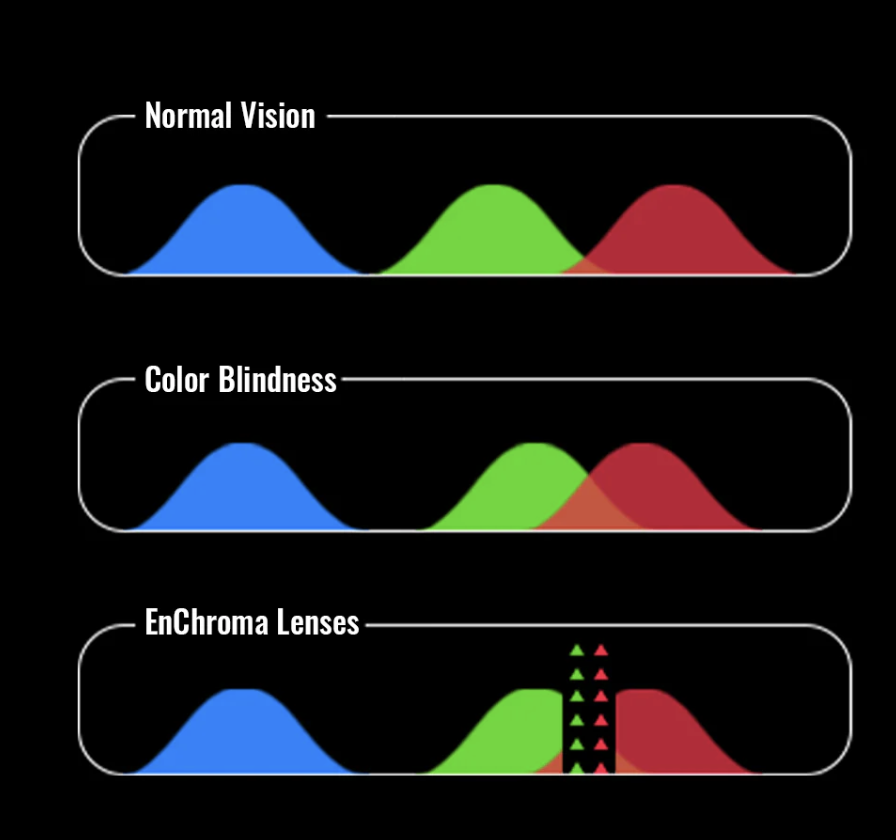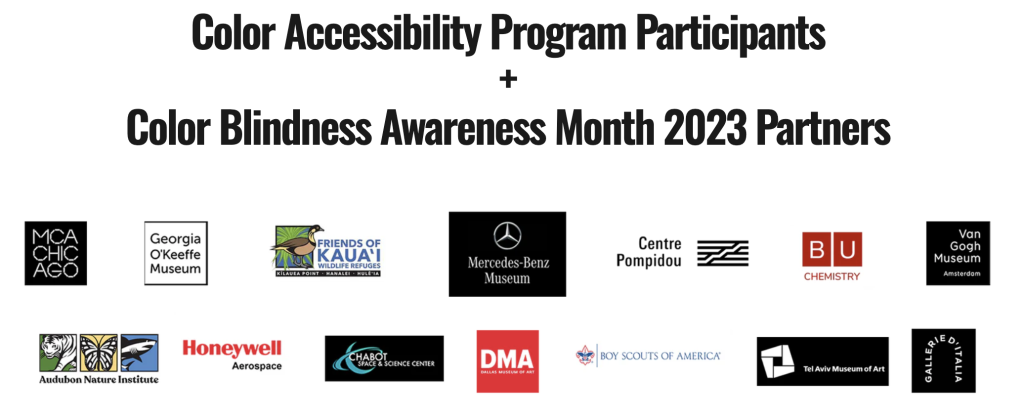
For individuals with color blindness, navigating a world designed around color can be frustrating. Everyday tasks such as interpreting traffic signals and distinguishing between similarly colored objects become far more difficult. EnChroma glasses are an assistive technology designed to enhance color perception by filtering specific wavelengths of light. While they cannot “cure” color blindness, they help some users see a broader range of colors.
Lens Technology: Enhancing Color Differentiation
EnChroma’s color-blind lens technology selectively filters light to increase the contrast between the red and green color signals to account for the overlap and alleviate symptoms of red-green color blindness. This would benefit users who struggle to see colors clearly and provide a better visual experience. However, while these glasses can improve color perception, they have some limitations.

From a medical model perspective, EnChroma glasses are an assistive tool that can adjust individual color blindness at certain levels. Approximately 80% of those with red-green color blindness will see some improvement in their ability to distinguish colors. But it cannot be treated and is not suitable for everyone. EnChroma glasses are designed to address most forms of red-green color blindness and are not intended to assist the vision of people with Tritan-type deficiency or Dichromacy, where only two of their three color-sensing cones are functioning.
The social model of disability challenges the idea that color blindness itself is the problem. Instead, it points out that the real issue is how systems and designs are built without considering color-blind users. Traffic lights, educational materials, and user interfaces often rely too heavily on color without offering alternative ways. While EnChroma glasses assist individuals in navigating these challenges, a pair of glasses can provide a clearer, more realistic visual experience.
Accessibility, Affordability, and Everyday Usability
Even though EnChroma glasses are an intriguing way to improve color perception, their $200-$400 price range indicates that they are not a small investment and are not accessible to everyone. They do, however, offer the EnChroma Color Accessibility Program, in which they have partnered with over 400 organizations to provide their color-corrected glasses at a variety of attractions such as libraries, museums, and other locations, thereby making them more accessible to a wider audience.

These glasses do have some usability issues: they are designed to work best in bright lighting, so they may not work well in dim environments. Furthermore, their impact is not immediate for all users; some report that it takes time for their eyes and brains to adjust, while others see little to no improvement.
The high cost and inconsistency of the results highlight a larger issue: accessibility should not be based on expensive personalized solutions. The most accessible approach should be to reconsider the color scheme used in designs.
Conclusion
EnChroma glasses are a great assistive technology that enhances color perception for some individuals with color blindness. It provides access to a wide range of color experiences; people can use it in a variety of settings, including museums, outdoor attractions, and so on.
Although it is not a flawless product with numerous limitations and is not the most accessible, all-inclusive solution, it is still a useful tool for individuals with color blindness.